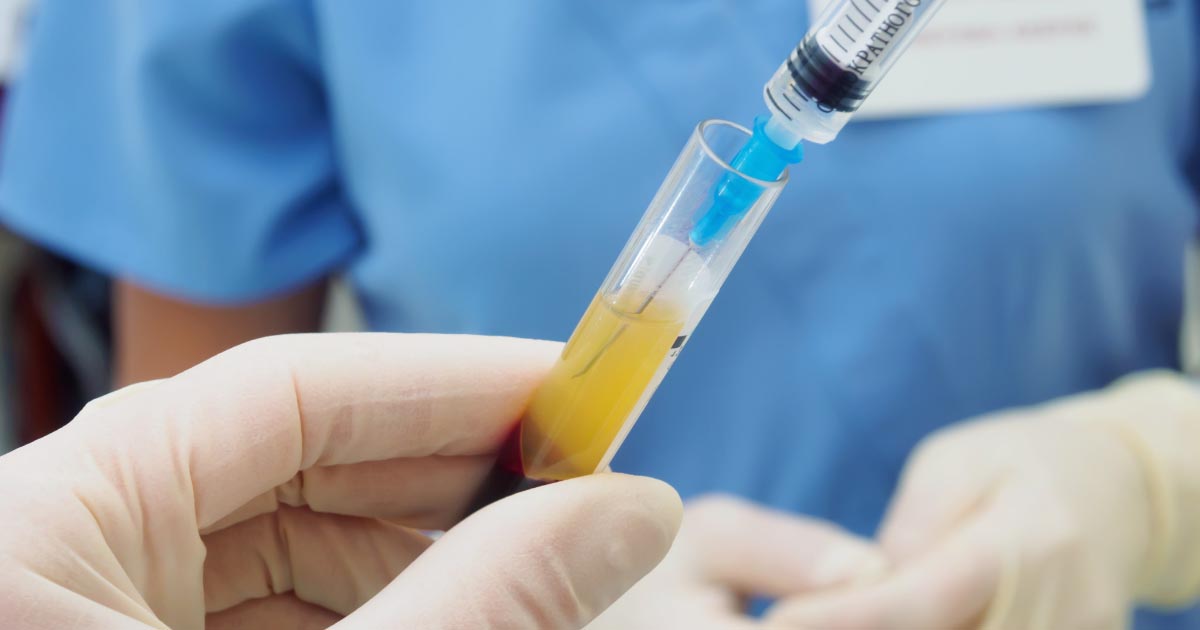How To Treat And Diagnose Diamond-Blackfan Anemia
Diamond-Blackfan anemia is a blood disorder in which individuals have bone marrow that cannot produce sufficient red blood cells to replace naturally dying ones. This condition develops due to a defective ribosomal protein gene. This defective gene causes the organelles called ribosomes in the patient's cells to be unable to produce certain proteins needed to form enough healthy red blood cells. Symptoms Of Diamond-Blackfan anemia include fatigue, pale skin color, breathlessness, dyspnea, short stature, thumb defects, and defects in the heart or kidneys. Neck, head, and face abnormalities are other signs.
Treatment for Diamond-Blackfan anemia is vital. Patients often need to try a variety of treatments to ensure that all their symptoms are handled. Although some patients may want to try natural chelation therapy, the best option is chelation medication. Blood transfusions for anemia are also a common treatment option. Many individuals may need a stem cell transplant for Diamond-Blackfan anemia as well. Of course, Diamond-Blackfan anemia treatment starts with diagnosing the condition properly.
Complete Blood Count (CBC)

A complete blood count (CBC) test is one of the many diagnostic methods for Diamond-Blackfan anemia. Professionals use it to evaluate the cells circulating in the blood, including red and white blood cells and platelets. The CBC is a group of tests capable of detecting a plethora of diseases and conditions, such as infections, leukemia, and anemia. It also assesses a patient's overall health. Red blood cells, also called erythrocytes, are released into the bloodstream when they mature and are produced in the bone marrow, a semi-solid tissue found inside the bones. Those contain hemoglobin, a type of protein that transports oxygen to the whole body. On the other hand, white blood cells or leukocytes exist in the lymphatic system, the blood, and tissues and play an essential part of the body's natural defense (immune) system. Lastly, platelets or thrombocytes are tiny cell fragments circulating in the bloodstream, and the human body requires them for normal blood clotting.
Continue reading to learn more about the different ways to diagnose Diamond-Blackfan anemia.
Peripheral Smear

A peripheral smear, which is also called a blood smear, is an essential diagnostic test for many conditions. Diamond-Blackfan anemia is one of them. A trained technician will spread a drop of blood in a thin layer onto a glass slide during a peripheral smear. Once this is done, they will treat the slide with a special stain. In other words, they count the different circulating blood cells. At this point, they will examine and evaluate the blood cells on the slide and check for any abnormalities. Results are available to the patient within one or two days.
Keep reading for more information on how to diagnose Diamond-Blackfan anemia.
Hemoglobin And Hematocrit Test

A hematocrit test measures the proportion of blood made up of red blood cells. As mentioned previously, blood consists of red and white blood cells and platelets, which are suspended in a fluid known as plasma. Together, these components are known as whole blood. The hematocrit test is a relatively quick and straightforward way to evaluate red blood cells and detect conditions such as anemia. The hematocrit test is a ratio of the volume of red blood cells to all the components' volume. That value is expressed as a percentage or fraction, so, for instance, a hematocrit value of fifty percent means that there are fifty milliliters of red blood cells in one hundred milliliters of whole blood. The volume of blood is typically made up of roughly thirty-seven to forty-nine percent of red blood cells. If the red blood count and the hemoglobin levels are low, the patient has anemia.
Diagnosing Diamond-Blackfan anemia on time is critical. Continue reading for more information.
Bone Marrow Analysis

Another way of diagnosing Diamond-Blackfan anemia is through bone marrow analysis, often by bone marrow aspiration. In this type of procedure, a professional will take a small sample of the fluid located in the bone's soft spongy tissue, also known as bone marrow. The cells responsible for producing white and red blood cells and platelets are contained. These cells are responsible for carrying those three types of cells inside more prominent bones, such as the hips, the breastbone, and the ribs. Most professionals will ask patients to get a bone marrow aspiration if they suspect that they might be suffering from any infections, blood cell conditions, a specific type of blood or bone marrow cancer (leukemia or lymphoma), or anemia. The procedure is very safe, but it might have some risks such as bleeding, discomfort, or an allergic reaction to anesthesia.
Discover more about Diamond-Blackfan anemia treatments now.
Genetic Testing

Most individuals who inherit Diamond-Blackfan anemia present one copy of an altered gene in each cell. Mutations in the genes are commonly responsible for causing the disease. Most mutations in RPS19, RPL5, RPS10, RPL11, RPL35A, RPS7, RPS17, RPS24, RPS26, and GATA1 genes are not limited to them. Regardless of the type of mutation that a patient has, making a diagnosis for a genetic or rare disease such as this one can often be challenging. Healthcare professionals will look at the patient's medical history, symptoms, physical exams, and laboratory test results first. They will likely suggest a genetic test to diagnose the condition.
Keep on reading about the possible treatments for Diamond-Blackfan anemia now.
Use Of Corticosteroids

Corticosteroids are a class of numerous powerful and potent medications utilized in the treatment of many different diseases. For a Diamond-Blackfan anemia patient, corticosteroids can help stimulate the body to produce more red blood cells. In the treatment of Diamond-Blackfan anemia, the goal is to keep the patient's hemoglobin at an acceptable value of approximately ten grams per deciliter by taking just enough of a corticosteroid.
Initially, corticosteroids are prescribed to an individual affected by Diamond-Blackfan anemia for several weeks to see if their body's hemoglobin increases. If the patient's hemoglobin levels do rise, the medication is then slowly titrated down in dosage. If their hemoglobin level drops too low, they may be prescribed a larger dose that will be kept the same or slowly decreased once their hemoglobin levels have reached a fair value. A patient treated with this method may grow resistant to its mechanism of action and require additional treatments.
Continue reading to reveal more options for treating Diamond-Blackfan anemia now.
Blood Transfusions

A blood transfusion is a treatment method for countless conditions where a healthy individual's blood is given to someone who is ill, diseased, or injured. Blood transfusions are sometimes administered regularly to treat various disorders. The donor blood is administered through a catheter installed in a vein or a more permanent intravenous port device on the patient's body. For chronic diseases and conditions, blood transfusions are administered at intervals between four and six weeks in a hospital, physician's office, or outpatient treatment center.
Since Diamond-Blackfan anemia patients have bone marrow that cannot make enough red blood cells for their body, blood transfusions can provide their body with more red blood cells to take the place of what is missing. Blood transfusions are utilized in Diamond-Blackfan anemia patients when other treatment types have not been effective, side effects of different treatments are not well tolerated, and their anemia is particularly severe and causes life-threatening complications.
Learn more about treating Diamond-Blackfan anemia now.
Stem Cell Transplant

Stem cell transplant is a treatment method where hemopoietic or blood-forming stem cells are taken from a donor and transplanted into an ill individual to help cure or treat their condition. Only a close biological relative or a specially matched donor can donate stem cells to a patient in need. Stem cell transplants are used for numerous different conditions that can cause bone marrow not to function. Donor stem cells integrate into the bone and form new bone marrow to replace diseased and dead bone marrow that can no longer produce enough blood cells for the individual's body. Diamond-Blackfan anemia patients can benefit from stem cell transplants because it is the only known potential cure for the disease.
However, few patients affected by bone marrow failure diseases like Diamond-Blackfan anemia are eligible to undergo stem cell transplants because the procedure has harsh side effects. An individual experiencing a stem cell transplant must have chemotherapy before the procedure to effectively clear the diseased or malfunctioning bone marrow from the bones before the transplant. If the patient is unable to tolerate chemotherapy, they cannot undergo a stem cell transplant.
Get more information on how to treat Diamond-Blackfan anemia now.
Chelation Medication

Chelation medication is a form of treatment utilized to remove certain metals from an individual's body. The drug works by binding to the compound and allowing it to be virtually eliminated from the body through the urine and stool. Chelation medication is most often used in conditions that cause an abnormal buildup of iron in the patient's body. Chelation medication is needed for Diamond-Blackfan anemia patients when they undergo blood transfusions to increase their number of red blood cells but accumulate too much iron due to the transfusion.
The human body does not have any natural mechanism to dispose of excessive iron, so the iron in donor blood can begin to accumulate to levels that are unsafe and toxic for the recipient's organs. As the iron in the blood transfusions is not able to be removed before being administered to the patient, the only way to keep iron levels acceptable with blood transfusions is the use of iron chelation medications.
Reveal more treatments for Diamond-Blackfan anemia now.
Treatment Of Side Effects

All treatments used on Diamond-Blackfan anemia patients carry potential adverse side effects, and based on these side effects, additional treatments may be necessary. Corticosteroid medication is often the first line of treatment for Diamond-Blackfan anemia, but a good portion of patients find they are unable to tolerate this type of medication. Corticosteroids can produce side effects such as weight gain, mood swings, blurry vision, increased body hair growth, easy bruising, puffy face, acne, osteoporosis, high blood pressure, stomach irritation, worsening of diabetes, water retention, cataracts, glaucoma, sleep difficulties, restlessness, nervousness, low infection resistance, and muscle weakness.
Blood transfusions can cause iron overload. When too much iron builds up in the body, it becomes toxic to vital organs like the liver and heart. Iron toxicity in these tissues can cause extensive damage and permanently compromise the function of the affected organs. Stem cell transplants for Diamond-Blackfan anemia can also produce adverse effects like graft rejection and graft-versus-host disease. An individual experiences skin inflammation, liver disease, and or diarrhea to react to the transplanted stem cells.
